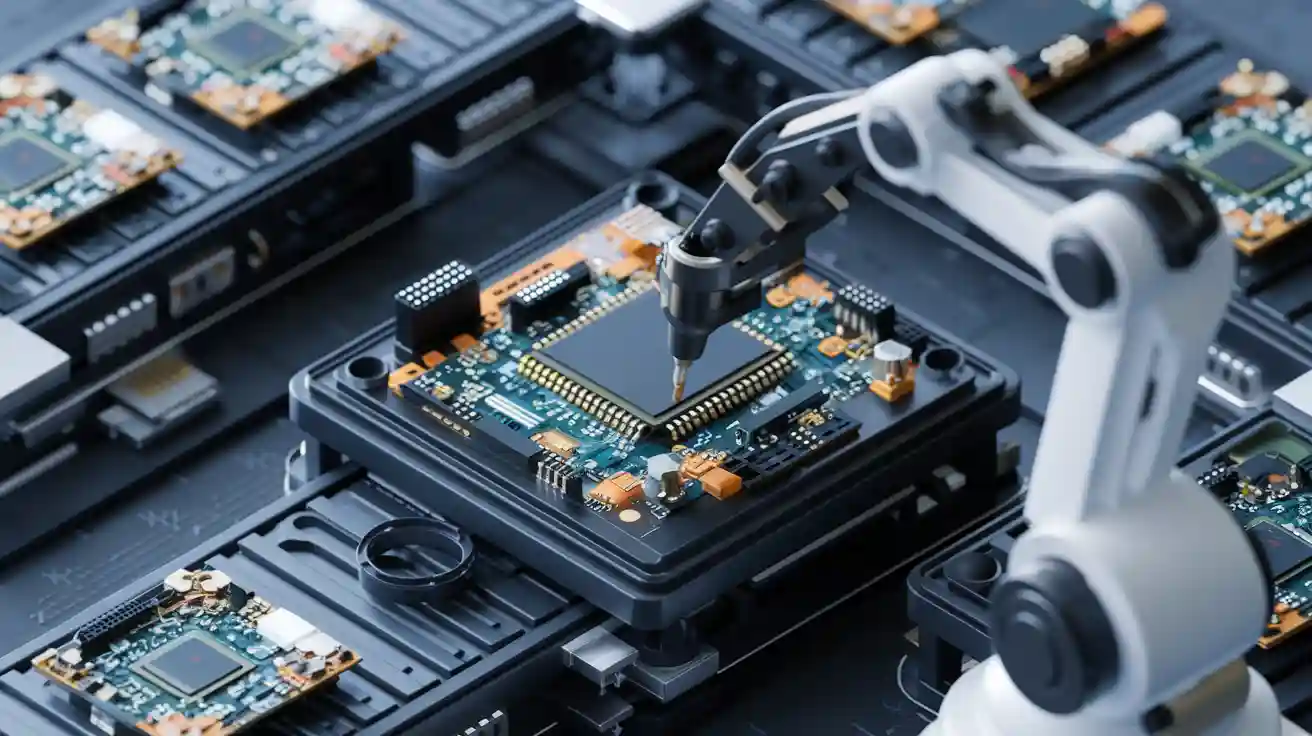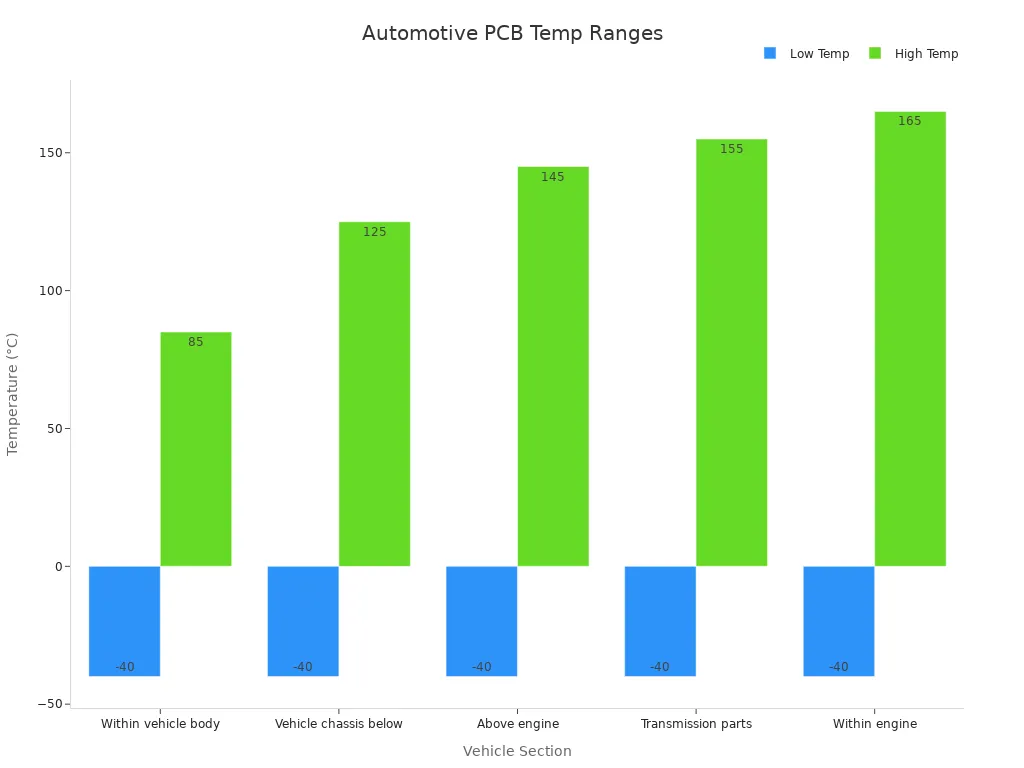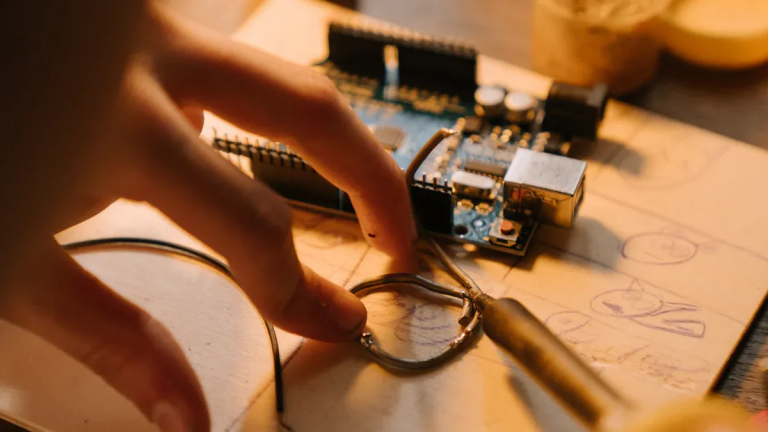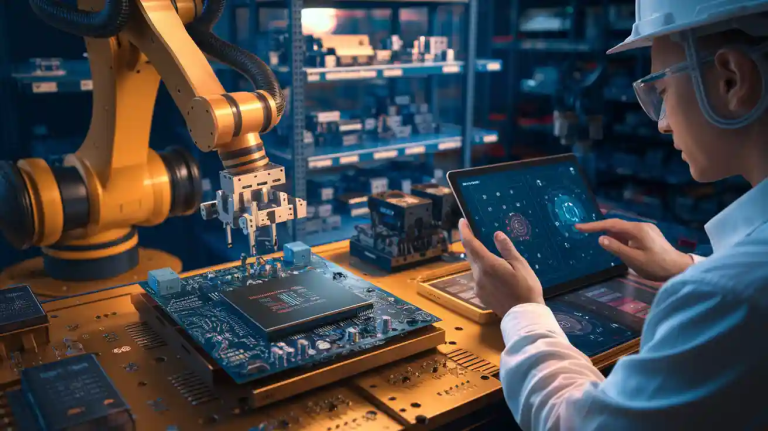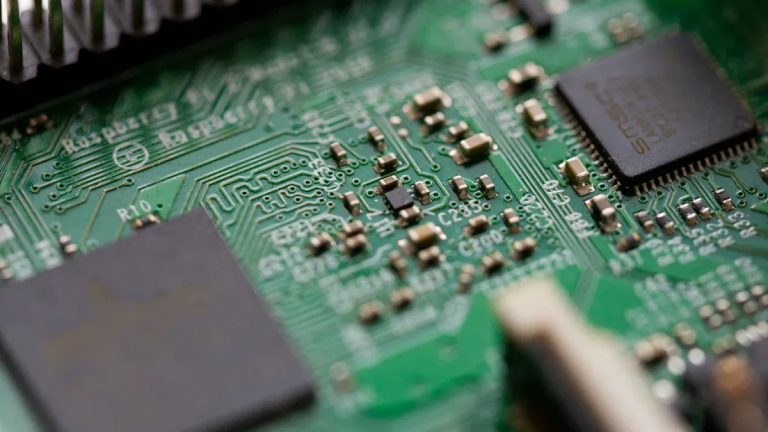Automotive PCBs power the brains of modern vehicles, ensuring safety, connectivity, and performance. As vehicles become smarter, the demand for these critical components continues to surge. In fact, the global automotive PCB market is projected to grow from $8.5 billion in 2023 to $15.8 billion by 2032, reflecting a robust 7.2% annual growth rate. This growth stems from the increasing integration of advanced systems like ADAS, infotainment, and electrification. Multi-layer PCBs, in particular, play a pivotal role in enhancing safety and reliability, making them indispensable for cutting-edge automotive technologies. By understanding their significance, you can appreciate how they drive innovation and efficiency in the automotive world.
Key Takeaways
- Automotive PCBs are important for cars, running safety and entertainment systems.
- Picking strong materials, like heat-resistant ones, makes them last longer in tough conditions.
- Testing them carefully, with electrical and stress checks, ensures they work well and last a long time.
- Saving money by using common parts and smart materials keeps costs low but quality high.
- Knowing new trends, like electric cars and self-driving, helps companies succeed in the car market.
Overview of Automotive PCBs
Modern vehicles rely on automotive PCBs to power their advanced electronic systems. These PCBs are the foundation of critical functionalities, from safety features to infotainment. Let’s explore the types, characteristics, and applications of these indispensable components.
Types of Automotive PCBs
Automotive PCBs come in various forms, each tailored to specific applications:
- Single-layer PCBs: These are the simplest type, featuring a single conductive layer. They are ideal for basic functions like lighting and simple sensors.
- Multi-layer PCBs: These PCBs stack multiple layers of conductive material, enabling complex circuit designs. They are essential for advanced systems like ADAS and infotainment.
- Flexible PCBs: Made from materials like polyimide, these PCBs can bend and twist, making them perfect for dynamic environments such as vehicle interiors.
- Rigid-flex PCBs: Combining the benefits of rigid and flexible PCBs, these are used in applications requiring both durability and flexibility, such as engine control units (ECUs).
| Vehicle Type | PCB Applications |
|---|---|
| Passenger Cars | ADAS, infotainment, connectivity solutions |
| Commercial Vehicles | Telematics, fleet management, safety features |
| Electric Vehicles | Battery management, charging, drive control |
Characteristics of Automotive PCBs
Automotive PCBs must meet stringent requirements to perform reliably in demanding environments. Key characteristics include:
- High thermal resistance: These PCBs endure extreme temperatures, ranging from -40°C to 165°C, depending on their location in the vehicle.
- Durability and reliability: They withstand vibrations, humidity, and other harsh conditions without compromising performance.
- Compact and space-efficient designs: As vehicles become more compact, PCBs are designed to maximize functionality while minimizing space.
Applications of Automotive PCBs
Automotive PCBs play a vital role in various vehicle systems:
- Engine control units (ECUs): These PCBs manage engine performance, ensuring efficiency and reduced emissions.
- Advanced driver-assistance systems (ADAS): Multi-layer PCBs enable high-speed operations for features like lane-keeping and collision avoidance.
- Infotainment and connectivity systems: Flexible PCBs support dynamic displays and connectivity solutions, enhancing the driving experience.
- Battery management systems (BMS): In electric vehicles, PCBs monitor and regulate battery performance, ensuring safety and longevity.
As vehicles evolve, the demand for automotive PCBs continues to grow. The rise of electric vehicles and autonomous technologies underscores their importance in shaping the future of mobility.
Step-by-Step Manufacturing Process of Automotive PCBs
PCB Design and Prototyping
Schematic design and layout
The manufacturing process begins with designing the schematic and layout of the PCB. You need to ensure that the design aligns with the specific requirements of automotive systems, such as engine control units or infotainment systems. Tools like CAD software help you create precise schematics, ensuring every component is accurately placed. Following industry standards like MIL-STD-810 and ISO 16750-3 for vibration testing ensures your design can withstand the harsh automotive environment.
Design for Manufacturing (DFM) considerations
Designing for manufacturing is critical to avoid production issues. You should focus on optimizing the design for cost-effective and efficient production. Advanced tools can merge design data with the bill of materials (BOM), identify discrepancies, and generate optimized outputs. This step ensures that your design is not only functional but also manufacturable at scale. Prototyping methodologies like the Engineering Validation Test (EVT) allow you to test and validate your design before full-scale production.
Material Selection and Preparation
Substrate materials (e.g., FR4, metal core)
Choosing the right substrate material is essential for the performance of automotive PCBs. Materials like FR4 and metal core substrates offer excellent thermal resistance and mechanical strength. These properties ensure that your PCB can handle the high temperatures and vibrations common in vehicles. Low moisture absorption rates are also crucial to prevent long-term deterioration.
Copper cladding and laminates
Copper cladding is applied to the substrate to create conductive pathways. You should select laminates with high thermal conductivity to dissipate heat effectively. This prevents overheating and ensures consistent performance. Thermal cycling and shock tests can validate the material’s ability to withstand extreme conditions, ensuring reliability in automotive applications.
PCB Fabrication
Etching and layering
The fabrication process starts with etching, where unwanted copper is removed to create the desired circuit patterns. Layering involves stacking multiple conductive and insulating layers to form complex circuits. High-mix production techniques allow you to achieve efficiency levels similar to high-volume production, even for intricate designs.
Drilling and via creation
Drilling creates holes, or vias, that connect different layers of the PCB. Precision is key here, as any misalignment can compromise the functionality of the board. Tools like Statistical Process Control (SPC) ensure accuracy and consistency during this step.
Solder mask application
Finally, a solder mask is applied to protect the PCB from environmental factors like moisture and dust. This layer also prevents short circuits by insulating the conductive pathways. By using ERP tools, you can optimize this step based on real-time customer requirements, ensuring a high-quality finish.
Component Assembly
Surface Mount Technology (SMT)
Surface Mount Technology (SMT) revolutionizes the way components are assembled onto PCBs. This method involves mounting components directly onto the surface of the board, eliminating the need for drilled holes. Automated pick-and-place machines precisely position components at high speeds, ensuring accuracy and reducing human error. These machines, combined with advanced reflow soldering techniques, create strong and reliable solder joints. SMT not only accelerates production but also enhances the quality of the final product. By adopting SMT, you can achieve reduced lead times, improved asset utilization, and consistent on-time delivery.
Through-hole technology
Through-hole technology, while older, remains essential for specific applications requiring robust mechanical connections. This method involves inserting component leads through pre-drilled holes in the PCB and soldering them on the opposite side. It is particularly useful for components that endure high mechanical stress, such as connectors or large capacitors. Although slower than SMT, through-hole technology provides unmatched durability, making it indispensable for certain automotive applications.
Testing and Quality Assurance
Electrical testing
Electrical testing ensures that every circuit on the PCB functions as intended. This step verifies the integrity of connections, checks for shorts or open circuits, and confirms that the board meets design specifications. By conducting electrical tests, you can identify and address defects early, ensuring the reliability of your automotive PCB.
Environmental stress testing
Environmental stress testing subjects PCBs to extreme conditions like thermal cycling, humidity, and mechanical shocks. These tests simulate real-world scenarios, ensuring that the PCB can withstand the harsh environments it will encounter in vehicles. For example, thermal cycling evaluates the board’s performance under fluctuating temperatures, while humidity tests assess its resistance to moisture. These rigorous evaluations validate the durability and reliability of your PCB.
Functional testing
Functional testing evaluates the PCB’s performance under real-world operating conditions. This step ensures that the board performs its intended functions seamlessly. By simulating actual use cases, functional testing helps you verify the PCB’s reliability and compliance with industry standards. This process not only enhances customer satisfaction but also minimizes the risk of failures in critical automotive systems.
Tip: Comprehensive testing protocols, including environmental stress and functional testing, are essential for ensuring the long-term reliability of automotive PCBs.
Key Considerations in Automotive PCB Design and Assembly
Material Selection
High-temperature tolerance
Automotive environments demand materials that can endure extreme heat. High-performance substrates like polyimide and ceramic excel in these conditions. They resist temperatures exceeding 165°C, making them ideal for engine compartments and other high-heat zones. Inorganic ceramic-based PCBs also offer excellent size stability, ensuring consistent performance under thermal stress. By choosing materials with superior thermal resistance, you can prevent failures and extend the lifespan of your automotive PCB.
Vibration resistance
Vehicles generate constant vibrations, especially in rough terrains. To combat this, you should prioritize materials with high mechanical robustness. For instance, metal core PCBs provide enhanced durability, reducing the risk of cracks or delamination. Using AEC-Q100 qualified components further ensures your PCB can withstand automotive-grade stresses. This approach not only enhances reliability but also minimizes maintenance costs.
Design for Reliability
Redundancy in critical circuits
Redundancy is essential for safety-critical systems like ADAS and ECUs. By incorporating duplicate circuits, you can ensure uninterrupted functionality even if one circuit fails. This design principle is a cornerstone of reliability, especially in systems where failure could lead to accidents. Robust design practices, combined with high-quality materials, create a fail-safe environment for your automotive PCB.
Protection against electromagnetic interference (EMI)
Electromagnetic interference can disrupt the performance of sensitive automotive systems. Shielding techniques, such as using grounded copper planes, help mitigate EMI. Additionally, adhering to IPC-A-610 Class 3 standards ensures your PCB meets stringent quality requirements. These measures protect your circuits from external disturbances, ensuring consistent and reliable operation.
Compliance with Industry Standards
ISO 9001 and IATF 16949
Compliance with ISO 9001 and IATF 16949 demonstrates your commitment to quality management. These certifications validate that your manufacturing processes meet global standards, ensuring high-quality PCBs. By adhering to these frameworks, you can build trust with automotive manufacturers and gain a competitive edge.
RoHS and REACH compliance
Regulations like RoHS and REACH restrict hazardous substances in electronic components. Compliance not only enhances safety but also aligns your products with global environmental standards. This commitment to sustainability makes your automotive PCB more appealing to eco-conscious manufacturers and consumers.
Note: Meeting industry standards and selecting the right materials are not just best practices—they are essential for creating reliable, high-performance automotive PCBs.
Cost Optimization
Balancing performance and cost
Optimizing costs without sacrificing performance is crucial in automotive PCB manufacturing. You can achieve this by adopting strategies that streamline production and reduce expenses. One effective approach is component standardization. By using common components across multiple PCB designs, you can lower costs through bulk purchasing and simplify inventory management. This strategy not only saves money but also reduces production complexity.
Another way to balance cost and performance is through value engineering. This process involves analyzing each component’s value to identify cost-saving opportunities. For example, you can replace expensive materials with alternatives that offer similar performance at a lower price. This ensures that your PCBs remain high-quality while staying within budget.
You should also consider alternate sourcing to reduce costs. Engaging multiple suppliers allows you to negotiate better prices and avoid supply chain disruptions. This approach ensures a steady supply of materials at competitive rates, helping you maintain production efficiency.
Efficient use of materials
Efficient material usage plays a significant role in cost optimization. By optimizing your PCB design and layout, you can reduce the number of components and minimize material waste. For instance, designing compact and space-efficient PCBs not only saves materials but also enhances the overall functionality of your product.
Managing the lifecycle of components is another effective strategy. Component life cycle management helps you avoid obsolescence, which can lead to costly redesigns or replacements. By planning ahead, you can ensure that your materials remain relevant and cost-effective throughout the production process.
Tip: Implementing these strategies can significantly reduce costs while maintaining the quality and reliability of your automotive PCBs. By focusing on both performance and material efficiency, you can stay competitive in the market and maximize your profits.
Automotive PCBs are the foundation of modern vehicle electronics, driving advancements in safety, connectivity, and performance. Their specialized manufacturing process ensures they meet the rigorous demands of the automotive industry, from extreme temperatures to constant vibrations. By mastering the design and assembly process, you can create high-quality PCBs that power the next generation of vehicles.
The growing demand for smarter, more connected vehicles highlights the critical role of automotive PCBs in innovation. As shown below, the market is expanding rapidly due to trends like electrification and autonomous driving technologies:
| Key Trends | Impact on Automotive PCB Market |
|---|---|
| Vehicle electrification | Increased demand for battery management and drive control PCBs |
| Autonomous driving technologies | Higher need for advanced systems like ADAS and connectivity |
Understanding these trends and aligning your manufacturing processes with them will position you as a leader in the automotive sector. By focusing on quality, reliability, and innovation, you can meet the evolving needs of this dynamic market.
FAQ
What makes automotive PCBs different from regular PCBs?
Automotive PCBs are designed to handle extreme conditions like high temperatures, vibrations, and humidity. They use specialized materials and manufacturing processes to ensure durability and reliability. These features make them ideal for critical vehicle systems like ADAS and engine control units.
How do you ensure the reliability of automotive PCBs?
You can ensure reliability by using high-quality materials, rigorous testing, and adhering to industry standards like ISO 9001 and IATF 16949. Environmental stress testing and functional testing also validate the PCB’s performance under real-world conditions.
Why is thermal resistance important in automotive PCBs?
Vehicles generate significant heat, especially in engine compartments. High thermal resistance prevents overheating, ensuring consistent performance and longevity. Materials like FR4 and ceramic substrates excel in dissipating heat, making them essential for automotive applications.
Can automotive PCBs support electric vehicles (EVs)?
Absolutely! Automotive PCBs are critical for EV systems like battery management, charging, and drive control. Multi-layer and metal-core PCBs handle the high power and thermal demands of EVs, ensuring safety and efficiency.
What are the key benefits of using flexible PCBs in vehicles?
Flexible PCBs save space and adapt to dynamic environments. They are perfect for vehicle interiors, infotainment systems, and displays. Their ability to bend and twist enhances design flexibility while maintaining performance.
Tip: Always choose the right type of PCB for your specific automotive application to maximize efficiency and reliability.


